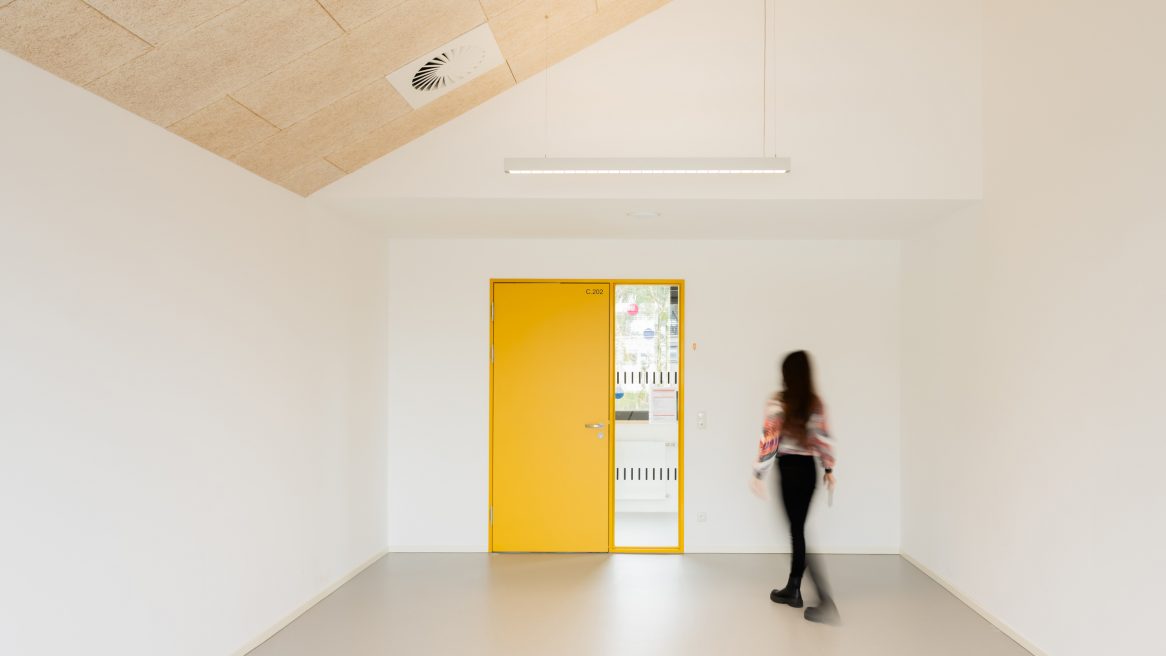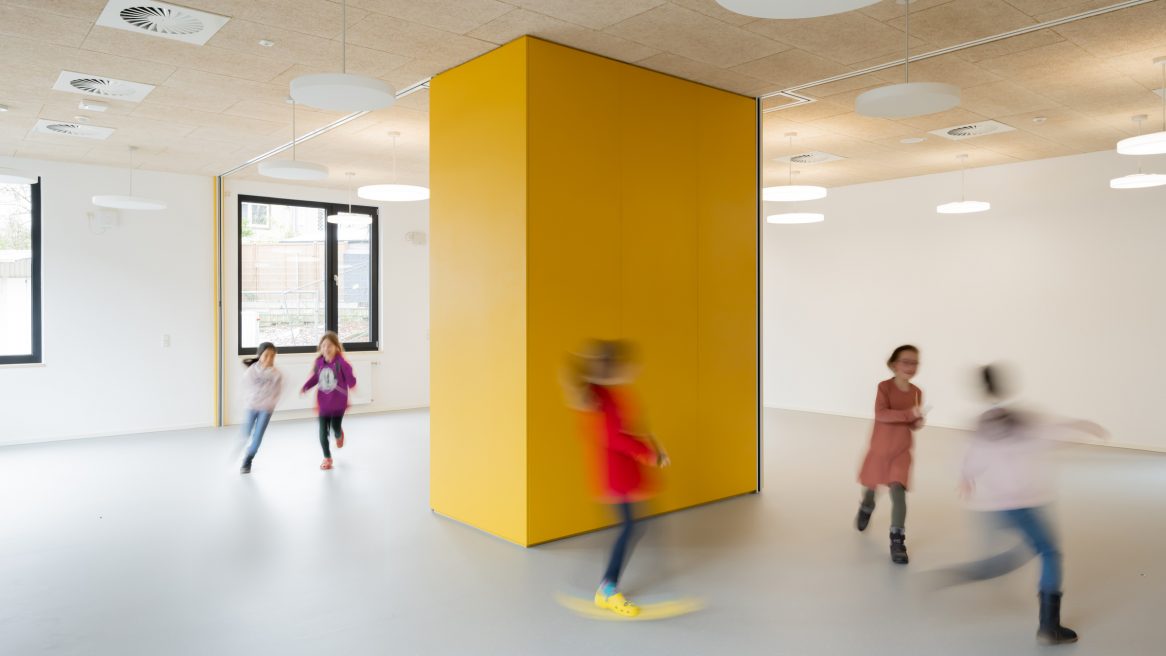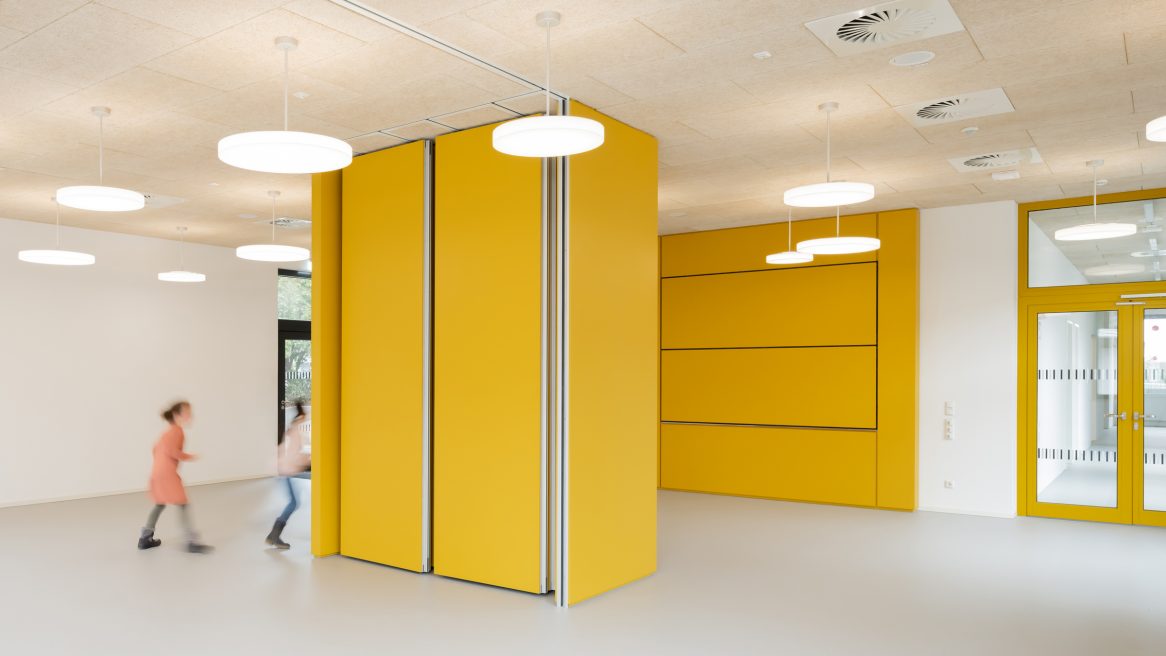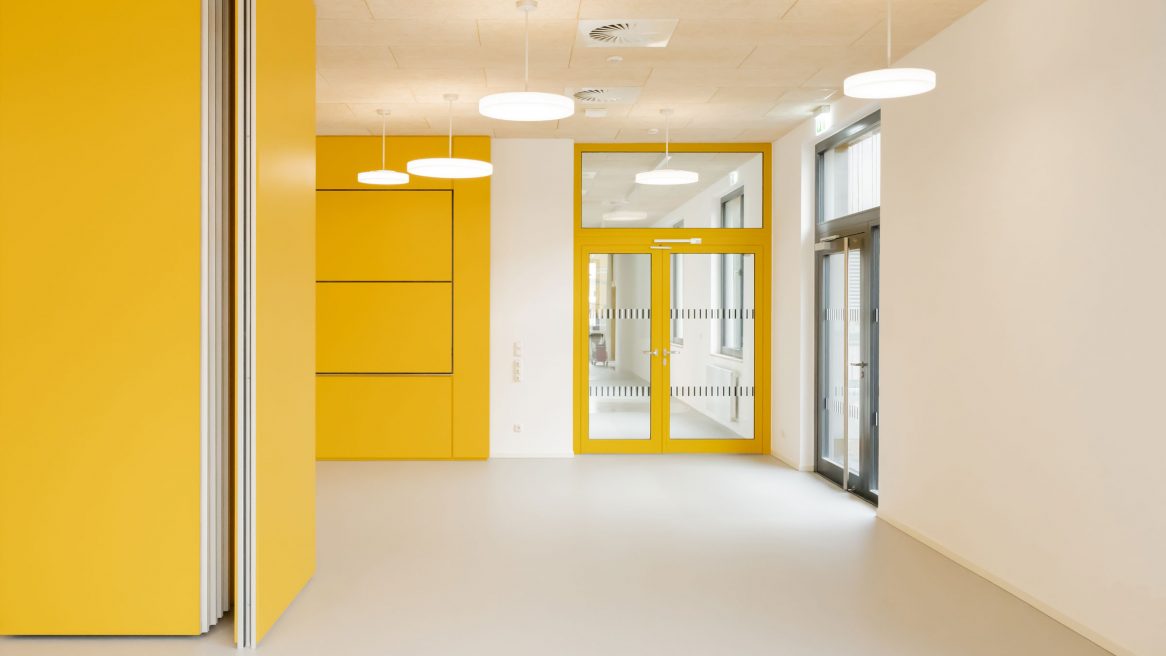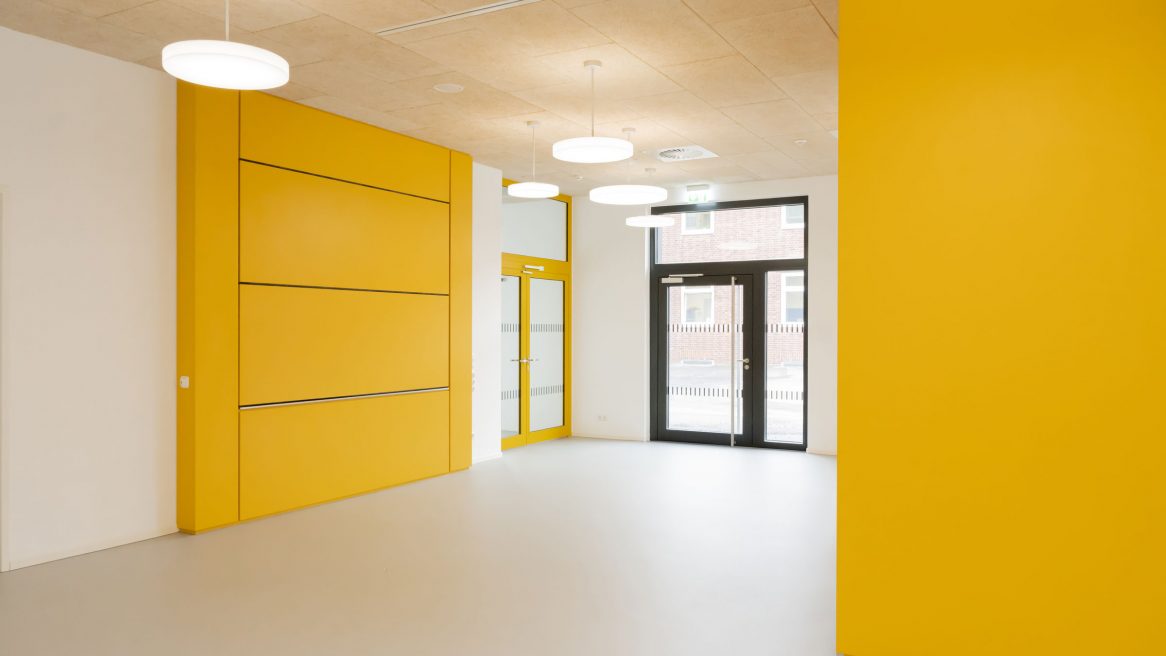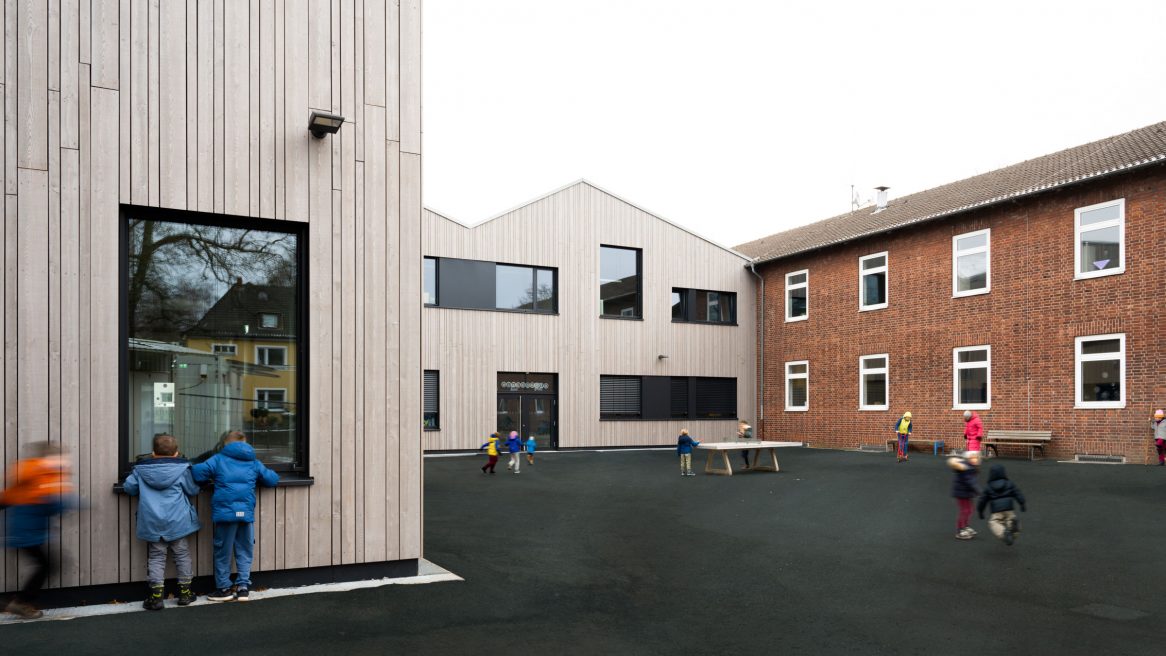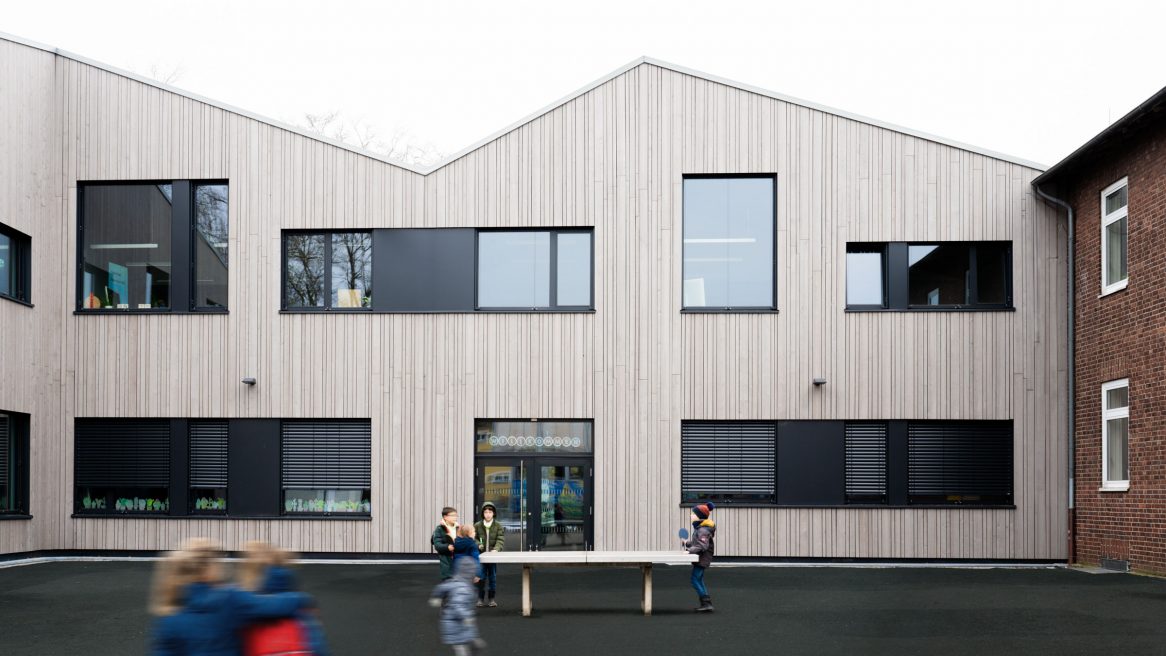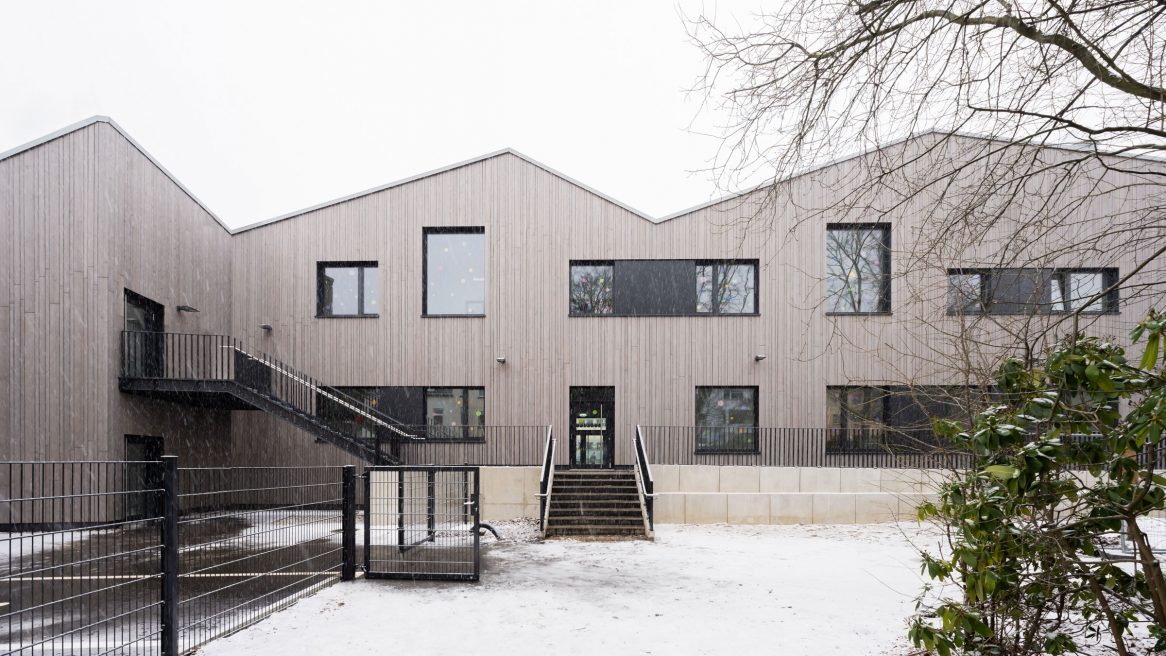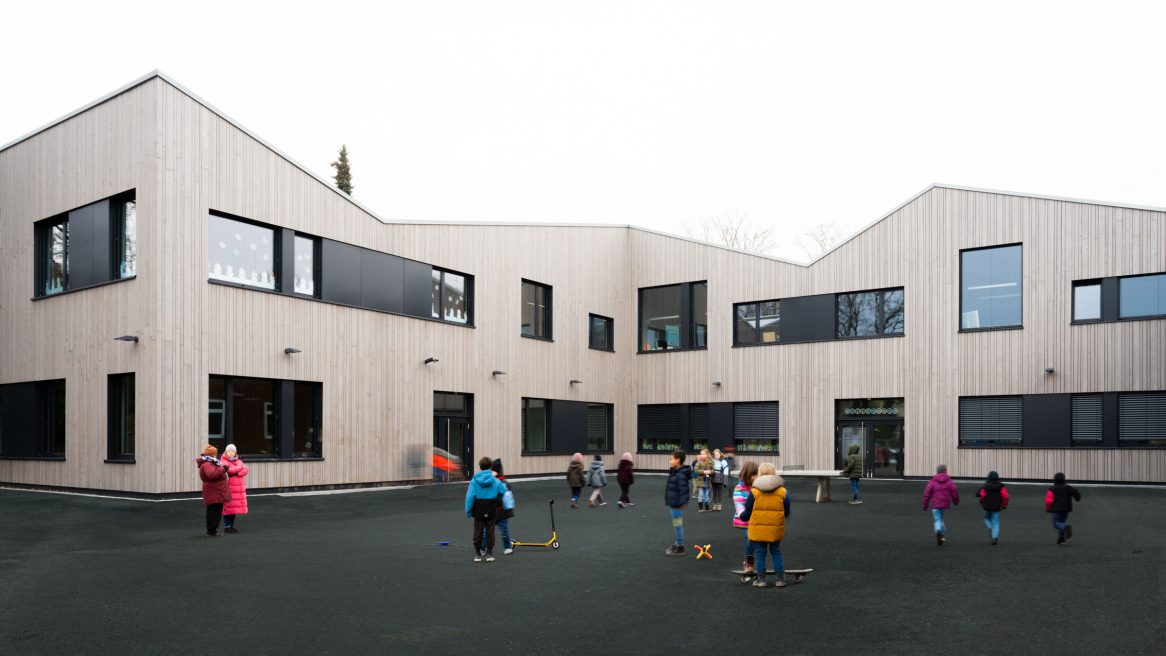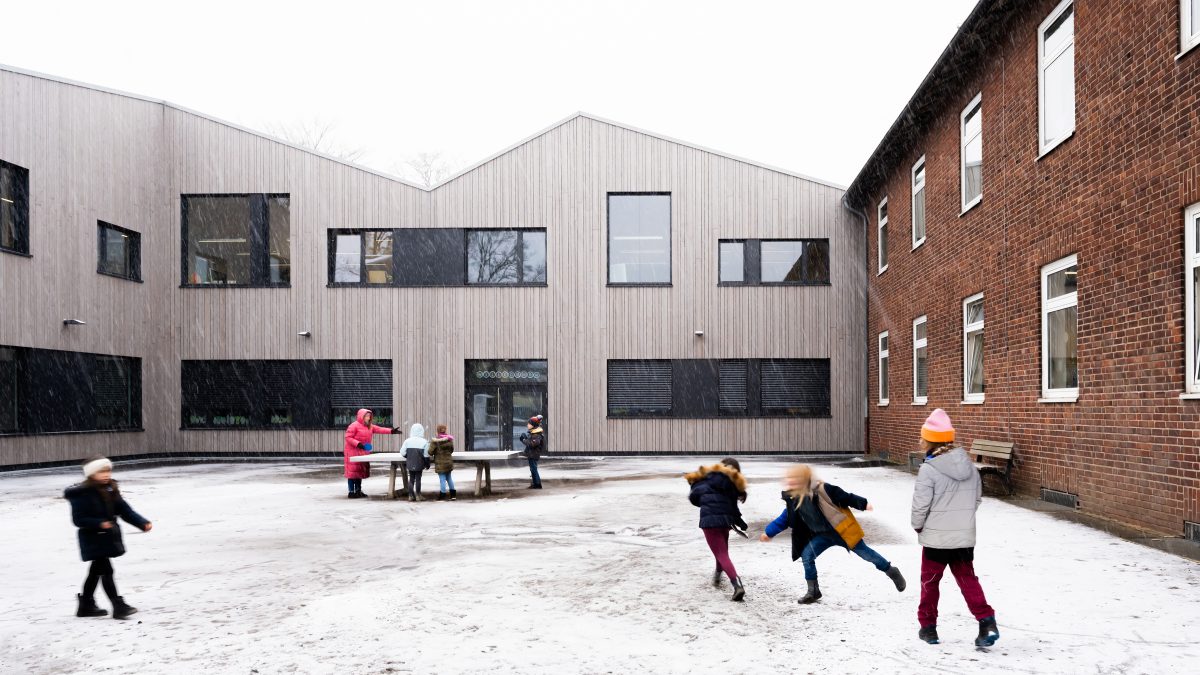
Learning Village
Extension and refurbishment of the Andreas Primary School, Essen
Sehw Architektur’s latest project once again exemplifies the three pillars of Sehw’s architecture. The new timber building in the existing ensemble impresses with its innovative approach, its sustainability and the social added value it creates.
It was no easy building task for the architects. The challenge was to renovate two ageing buildings from the 1950s and combine them into a holistic ensemble through the addition of several new structures. The aim was to create a contemporary and pedagogically inspiring teaching and learning environment that meets the modern requirements for educational institutions. The newly created “learning village” with its four buildings in the centre of the city achieves just that. The design of the new timber building on the existing school campus mediates between the existing and the new buildings by continuing the gabled roofs of the post-war modernist style and transforming them into a landscape of sloping roof surfaces.
“Learning Landscapes under Roof Landscapes“
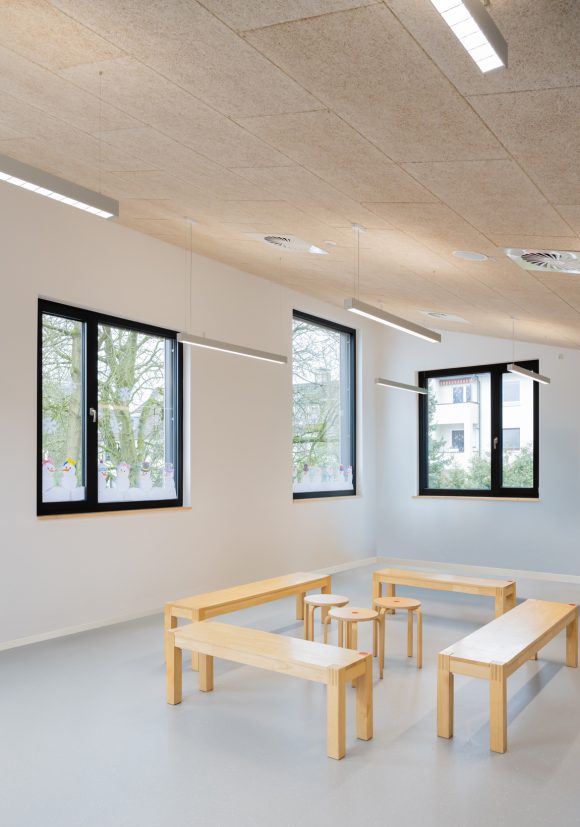
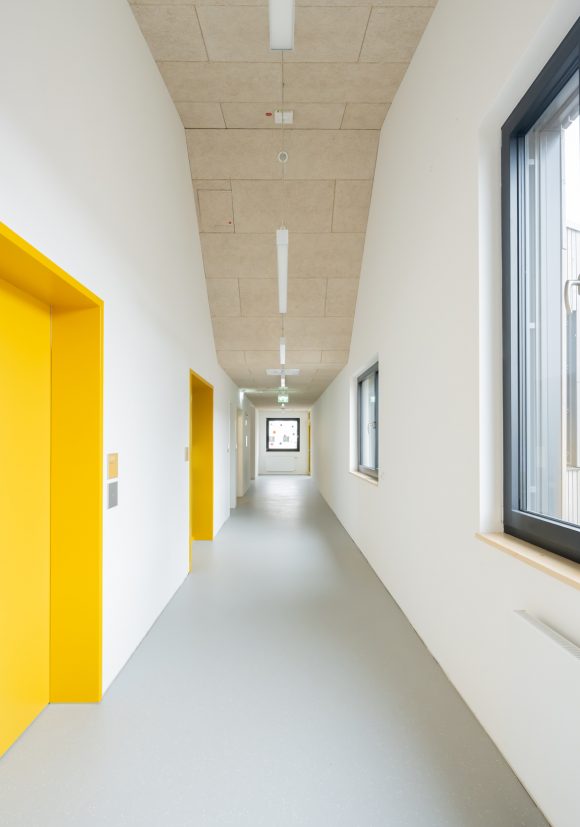
The focus was on the meaningful integration of the new building into the existing urban context, with the construction of additional classrooms for 100 pupils and a modern school canteen taking centre stage. Sehw’s architectural solution results in high-quality spaces and a pleasant atmosphere, as the roof landscapes are also perceptible inside the building. It also creates social added value by providing spatial landscapes and informal learning areas corresponding to modern pedagogy. This not only expanded the available space for one class each in grades 1 to 4, but also took into account the increasing needs in terms of all-day school care and catering. The entire project was planned and implemented with a focus on sustainable and energy-efficient construction.
“Holistic planning that takes into account not only architectural but also organisational aspects.”
The most significant challenge was executing the construction work on a confined inner-city plot while the school remained in operation and minimising disruption for pupils and teachers. This was a key reason for using prefabricated timber construction to erect the new buildings. The holistic planning approach considered not only architectural but also organisational aspects.
“Powerfully playful effect”
Sehw Architektur consistently opted for timber system construction to accommodate ecological considerations while enabling an aesthetically appealing design. The distinctive roof landscape, vertical timber cladding as the building envelope and freely composed window openings lend the building a both powerful and playful appearance. Natural and warm surfaces and shades are predominant among the materials and colours selected. The idea was that the children themselves would bring vibrant colours into the building, with the only exception being a bold yellow for doors to accentuate and provide orientation.
The L-shaped floor plans of the new buildings create several interconnected open spaces, which were programmatically designed as a school garden, playground, movement area, etc. In the layout, the movement zones are assigned to the schoolyards, thus creating frequency, visibility and communication. The classrooms and other functional spaces are facing the quieter side to ensure focused learning. The differently sized and positioned windows allow daylight to penetrate deep into the rooms and contribute to a feel-good environment.
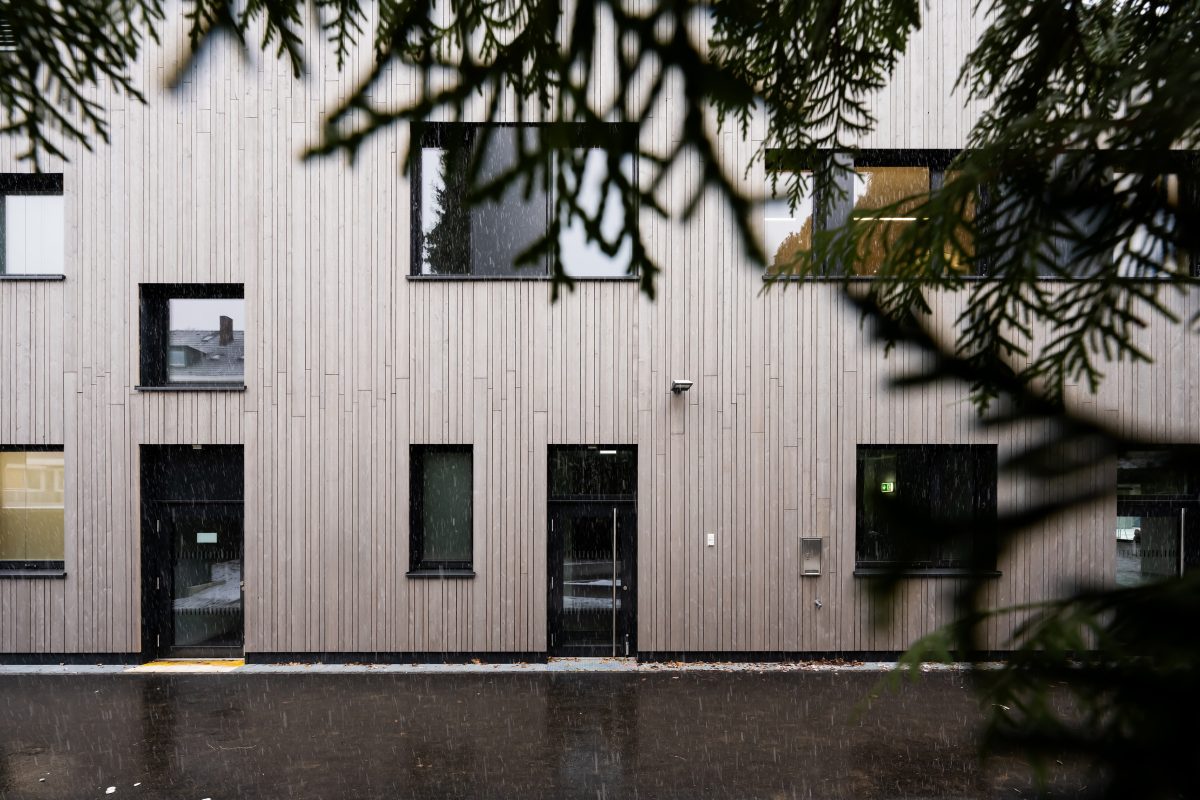
The architectural design demonstrates an innovative approach to school construction projects. The use of modern timber system construction with a high degree of prefabrication ensures that innovation is not just a buzzword but an integral part of the design.
Social added value manifests in the creation of communal areas both indoors and outdoors, informal learning spaces and a modern school canteen. These spaces are not just functional but serve as meeting points and communication hubs for pupils and teachers, promote social interaction and create a pleasant learning and working environment. With its low height and sloping roofs, the new building volumes blend in with the surrounding urban fabric. Extending the school’s outdoor spaces to the street literally brings the school closer to the neighbourhood. The roofed forecourt serves as weather protection and also as a gathering place.
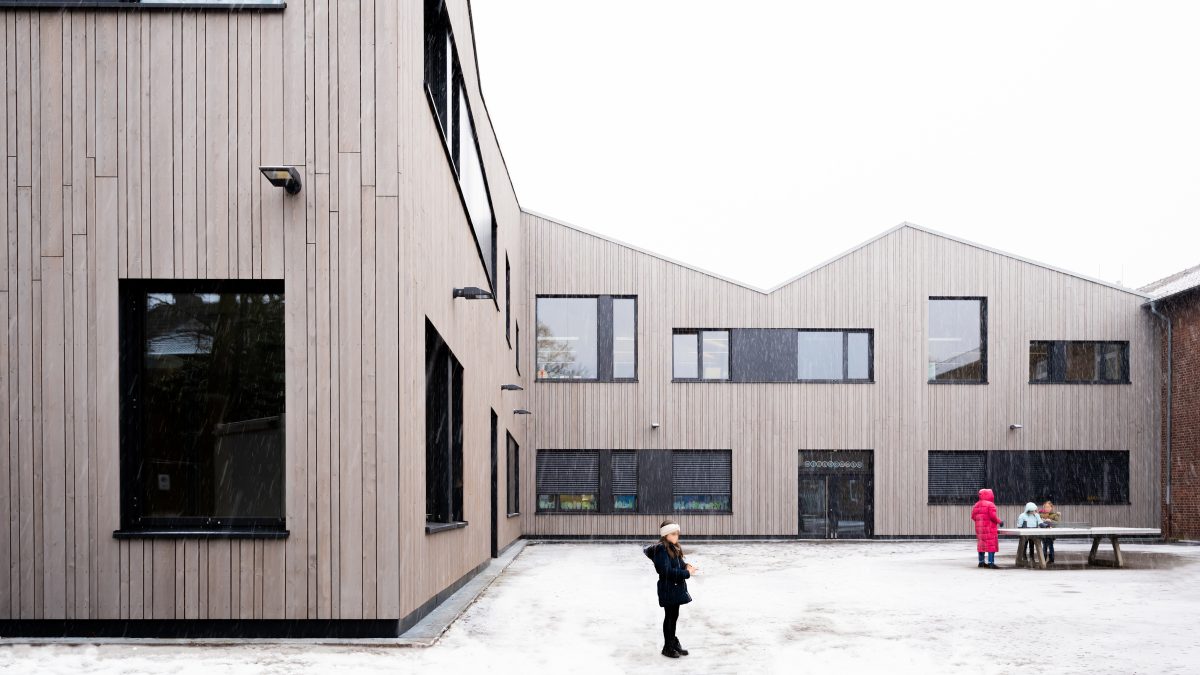
“The creation of communal areas inside and outside creates social added value.”
Opting for timber system construction at an early stage emphasises the project’s focus on sustainability and facilitates a rapid construction process. Adhering to Passive House standards for the building envelope, coupled with ventilation technology with heat recovery, the use of sustainably produced district heating and intensively greened sloping roofs, completes the sustainability concept as regards energy efficiency, water management, biodiversity and microclimate.
Implementation during ongoing school operations in multiple small-scale stages illustrates Sehw Architektur’s commitment to overcoming not only architectural but also organisational challenges. A correspondingly complex construction site concept ensures that potential disruptions for pupils and teachers are minimised, hazards can be eliminated and there are always enough open spaces for breaks, despite ongoing construction activities. Live construction site included for free!
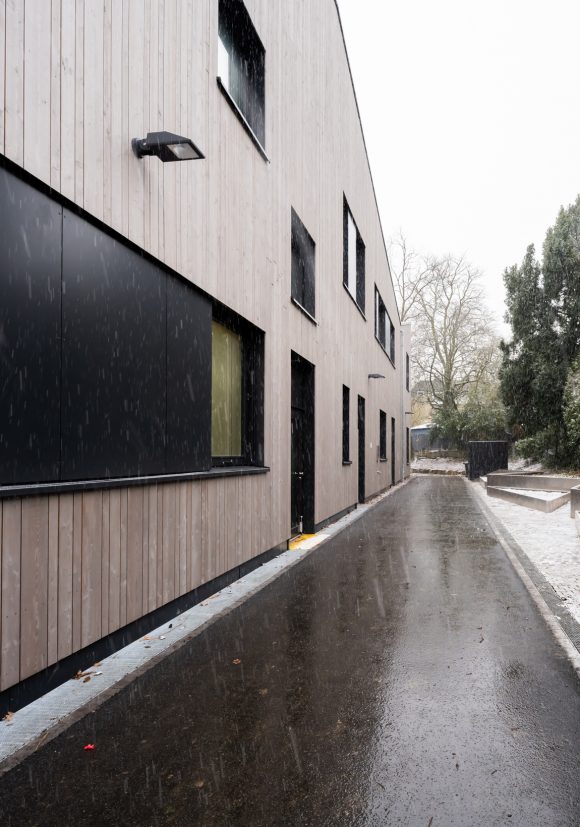
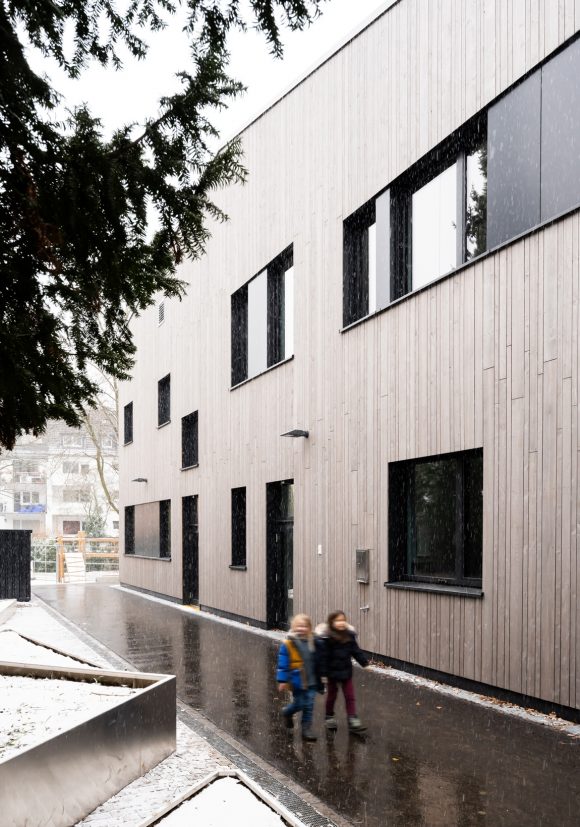
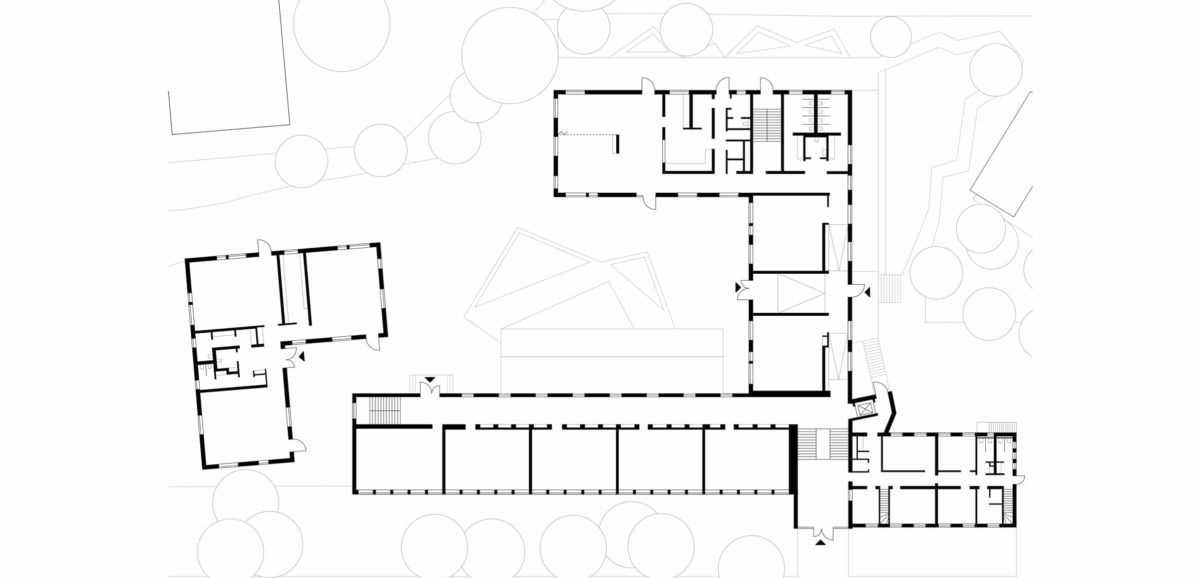

-
Project type
Refurbishment
New construction
-
Purpose
Education
-
GFA
4,117 m²
-
Project status
Completion of
1. constr. phase 2023 -
Period
2017 – 2026
-
Construction cost
16,800,000 €
-
Service phases
1 – 9 (HOAI)
-
Project team
Karoline Hietzschold
Wadim Kahlkopf
Christoph Kolb
Eun Kyoung Song
Florent Le Corre
Koert op den Brouw
Till Brasche
Andrea Varel
-
Photography
-
Publication
